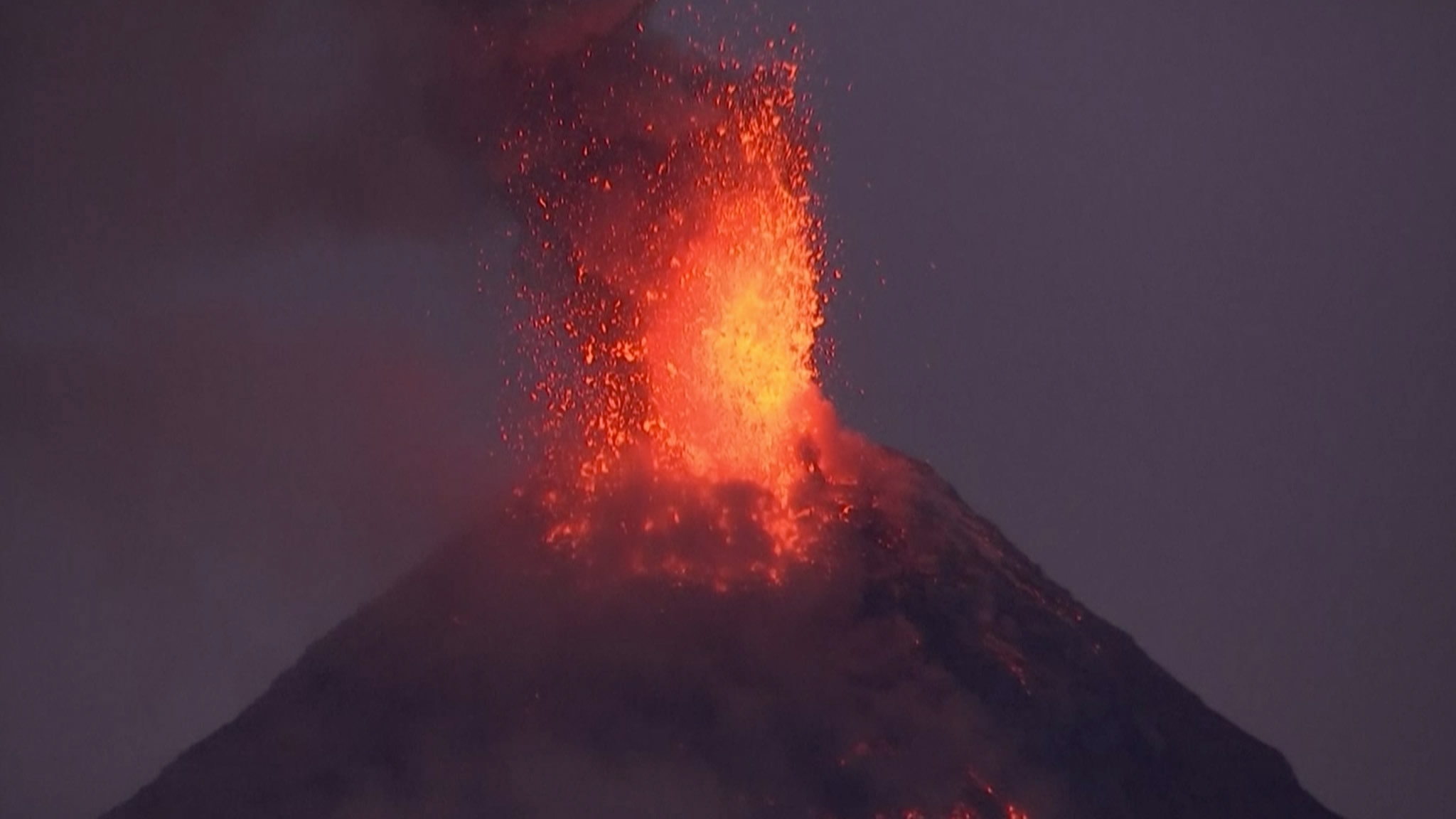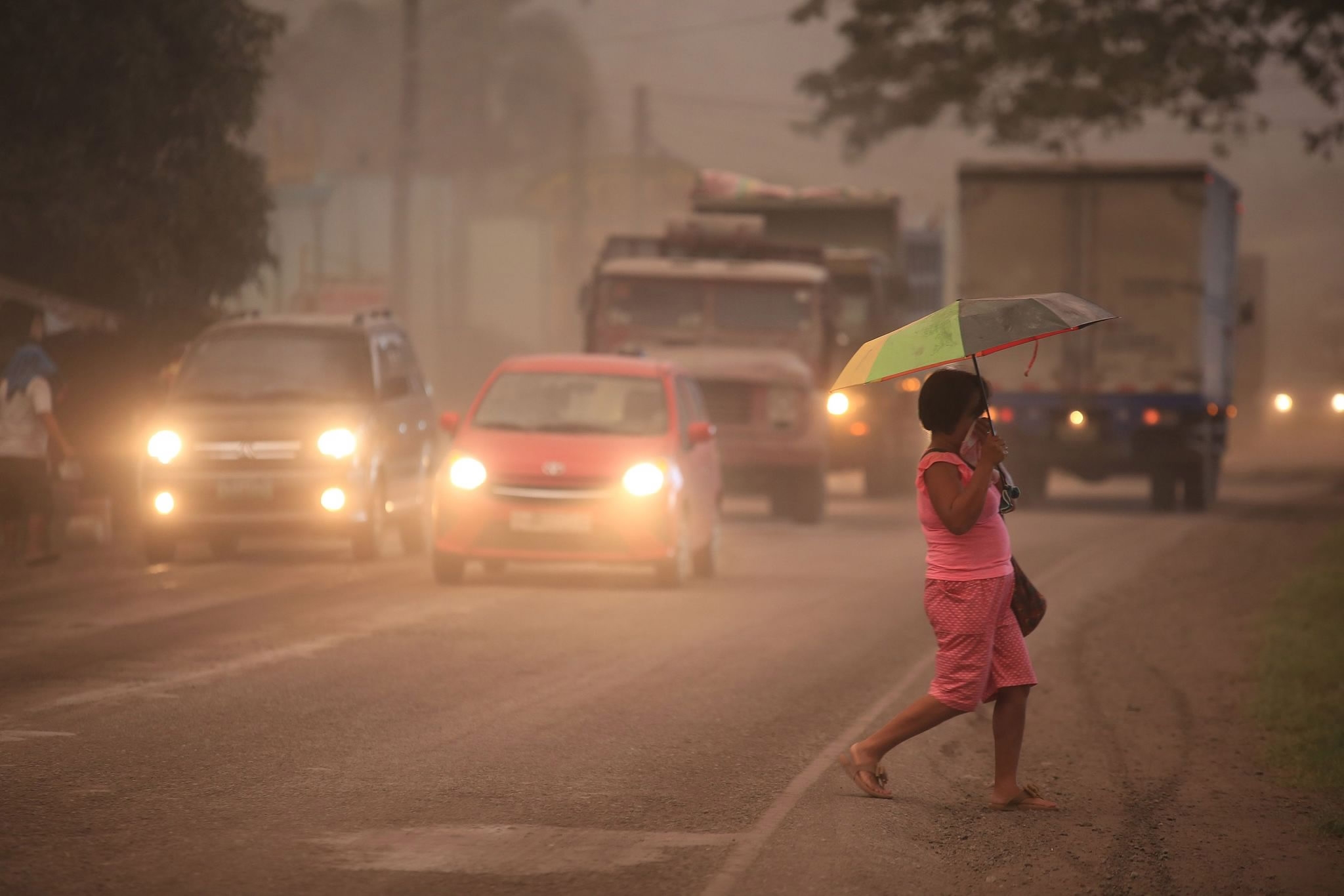
Tech & Sci
12:27, 23-Jan-2018
Mt Mayon Volcano alert level raised after eruptions intensifies
Alok Gupta

The Philippine Institute of Volcanology and Seismology (PHIVOLCS) upgraded the alert level on eruption from Mt. Mayon Volcano to level four on Monday afternoon.
On Monday, volcanologists recorded around five-kilometer-high eruption from the volcano that lasted for nearly eight minutes. The high-intensity explosions have forced authorities to increase the radius of the danger zone.
The volcanic ash from the recent eruptions affected the municipalities of Guinobatan, Camalig, Oas, Polangui and Iriga City, in the province of Albay. Volcanologists also recorded five episodes of intense but sporadic lava fountains from the summit crater lasting for more than 30 minutes.
“The lava fountains reached 500 meters to 700 meters high and generated ash plumes that reached 2.5 to 3 km above the crater,” PHIVOLCS maintained. The lava is flowing towards Miisi and Bonga Gullies and also caused rock fall in the summit area.
The alert level four—highest is five—means persistent low-frequency tremors with a sustained increase in the concentration of sulfur dioxide. The high seismic activity may further increase lava flow in the summit area.
“The danger zone radius has been increased from six to eight kilometers. A level three alert means danger zone radius is six kilometers and when the alert level is upgraded to level four, it is extended to eight,” PHIVOLCS officials said during a media briefing.
The moderate to heavy ashfall coupled with the release of sulfur dioxide has spiked pollution level in the area. Volcanologists and relief agencies are urging residents in the grip of ash fall to use masks and stay indoors.
Officials revealed that in the long run, the entire population from the eight-km danger zone has to be evacuated and resettled at a new location. The lava flow and rockfall are likely to cause human casualties, in case residents are not evacuated. Local authorities have evacuated nearly 27,000 people to relief camps.

A resident covers her face to escape ashfall and sulfur dioxide gas release from Mount Mayon Volcano. Eruptions has increased the pollution level in the area. /VCG Photo
A resident covers her face to escape ashfall and sulfur dioxide gas release from Mount Mayon Volcano. Eruptions has increased the pollution level in the area. /VCG Photo
Volcanic eruptions to affect agriculture and animal husbandry
Ding Baldo, mayor of Camalig in the province of Albay, told CGTN that farming and animal rearing is the primary occupation of the residents around the volcano. “These residents are likely to lose their habitat and livelihood as lava flow advances to their villages,” she said.
The PHIVOLCS officials during the media briefing pointed out lahars--debris flow consisting of pyroclastic materials from eruptions are likely to destroy vast tracts of farmland and also cause mudslides. “Situation will turn serious if rainfall occurs in the volcanic region further intensifying lahar flow.”
According to a World Society for the Protection of Animals (WSPA) study, cattle and buffaloes were left behind tethered to trees when Mayon rumbled in 2001; however, the majority of these were left outside the six-km permanent danger zone, away from the dangers of lava and pyroclastic flows.
“Grazing animals easily ingest the ash, and sharp, glass-like, silicates particles cause inflammation of the mucous membrane which leads to digestive problems, diarrhea, and possible death,” the study revealed.
Learning from the past relief operations, authorities have started shelter for cattle this year. Schools have been closed in the region till further notice. The volcano first erupted in 1616 and then in 1814, killing more than 1,200 people.

SITEMAP
Copyright © 2018 CGTN. Beijing ICP prepared NO.16065310-3
Copyright © 2018 CGTN. Beijing ICP prepared NO.16065310-3